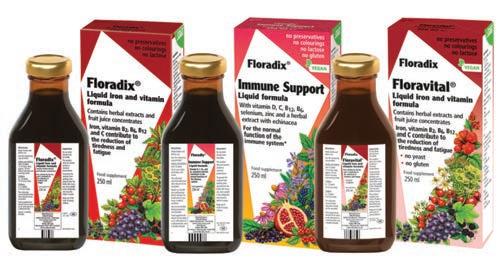
18 minute read
Marianne Heron
Primal scream: how can we keep ourselves safe?
AS I SEE IT
Advertisement
MARIANNE HERON
Talking with a group of women friends last week our conversation turns to self- protection. e topic was triggered by the recent spate of horri c robberies of elderly people and violent attacks on women. It’s a really serious issue but protecting yourself in a way that isn’t either illegal, dangerous or just plain foolhardy turns out to be a head scratching subject.
A lot of the advice around is about prevention. Keeping a watchful eye on things through Neighbourhood Watch in urban areas and Community Alert in rural areas is one approach involving two-way communication between the community and the Gardai about suspicious or anti- social behaviour in the area. But suppose you are about to be robbed or attacked?
How about zapping the attacker or robber and incapacitating them?
While this may work in Nordic noir thrillers, defensive weapons like tasers, stun guns or even pepper sprays are illegal here in Ireland although there a plenty of devices o ered on line.
Googling local self-defence organisations later, I nd pictures of wall-to-wall males in martial arts out ts and can’t quite imagine inging them onto an EVA foam mat. More likely I will be ung. Someone suggested using a really loud sound device handy when worn as a deterrent, loud enough to discombobulate an attacker or alert people nearby.
Sirens may be e ective and all right to use so long as they emit safe sound. But sonic devices or powerful ampli ers capable to sending sound over long distances can cause hearing loss, others can cause nausea or discomfort and while you might want to in ict this on the assailant you don’t want to be a ected yourself. Again, there are lots of devices advertised on the internet. ere were 21,265 burglaries here in 2016, many while homeowners were out but one guesstimate suggests that in around 15,000 cases people encountered the robbers. ere are a variety measures that could keep people safer from attack when at home like inexpensive, readily available door viewers, chain locks, door jammers.
Home and personal alarms are more costly deterrents and only e ective so long as someone answers them promptly. But o ensive weapons including sap (reinforced) gloves, Kusarigama and Ninja Shuriken ( Japanese ball and chain weapon and throwing star in case you wondered,)are out.
CCTV cameras are quite an e ective deterrent and there are some relatively inexpensive types suitable for home use. One bright spark suggested putting up a notice saying “Smile you are on camera” to put o robbers.
Other ideas to prevent burglary that came up in the conversation ranged from dog deterrents, not necessarily a four-legged friend but alternatives like a Beware Of e Dog notice, a barking dog recording and even a large bone by the front door to indicate the presence of a hound.
Various subterfuges that come up in the discussion include: pretending to have an epileptic t, threatening the rascals with a convincing toy gun, keeping a small sum of money hidden to give to thieves in the hope they will be satis ed.
One of the worrying things to emerge is the fact that several of us have been attacked or followed. ere are local places where the women thought it wasn’t safe to walk alone, including a beauty spot where there have been attempted attacks.
Having public spaces with CCTN cameras and lighting would certainly help. Fingal County Councillors recently announced a move to consult with women in North County Dublin about ways to make public spaces safer. Let’s hope more councils follow suit.
My own suggestion in time of danger is to scream at the top of your lungs, primal maybe but it certainly scared o two hooded youths who were intent on robbing me.
Liquid versus tablets
CLAIR WHITTY
MANY of you can’t swallow large tablets or capsules and are always on the lookout for alternatives to them. Floradix Liquid Iron is an iron supplement many of you are familiar with. It occurred to me that you might not know that there are other fantastic Floradix liquid supplements, so I thought this week I would tell you about some of them. I like these products because not only have they been around for years but they’re e ective and contain natural ingredients.
For example, if you’re stressed think about Neurobalance this contains Ashwagandha. A herb I talk a lot about too. Ashwagandha is commonly used for energy, stressful, and anxiety. Typical times would be around exams, house buying, stressful times like we have just been through, going back to work, or travel. ese are all times that you might nd the bene ts of Ashwagandha. It’s combined with Lemon Balm and Rosemary, so you have an ideal mixture to help with stress and anxiety, helping you to feel good again. Some of you can’t swallow tablets so Neurobalance could be ideal for you.
Floradix Immune Support contains vitamin C, D, B12, B6, selenium, zinc and a herbal extract with echinacea for the normal function of the immune system. is is great mix of herbs, vitamins, and antioxidants all in one formula and is ideal if you don’t want to buy all of these separately. It’s easy to take and will get into the system quickly.
Floradix Gallexier Aperitif and digestive aid is a really nice option to support digestion. It contains artichoke, dandelion, turmeric and other bitter herbs. Bitter herbs help stimulate the digestive system which can reduce bloating and digestive discomfort.
Floradix Liquid Magnesium is a great option again for people who don’t like powder forms or large tablets. It can ease sore muscles, improve energy, help sleep problems, and reduce the symptoms of restless legs.
Some of the other products in the Floradix range include B Complex, Calcium, Saludynam which contains a lovely mix of calcium, magnesium, and zinc, an ideal choice for healthy bones and teeth. And Kindervital, which is a pleasant tasting multivitamin for kids.
Floradix use only the best available ingredients and are excellent quality. I think it is worth checking out the Floradix range of liquid supplements.

Why not call in to see at Market Cross Shopping Centre. Phone: 056 7764538 Email: info@naturalhealthstore.ie Shop online at www.naturalhealthstore.ie
Return to the office not all bad
ANDREW MCDONALD HYPNOTHERAPIST
IN every negative, there is a positive. For many people the plus point of covid lockdown and restrictions was being able to work from home. More time with families or for leisure activities, no need to endure the challenges of travelling. If that hasn’t already come to an abrupt end for everyone, the move back to the of ce isn’t far away now.
If you were one of those who got used to remote working, how do you feel about returning to the workplace? Excited to soon be mixing with colleagues again? Or anxious about having to dress up and leave the safety of your home? e exibility and freedom of working from your home will be hard to give up for many. e thought of losing them is bound to increase worrying. at said, there have been reports of WFH (Working From Home) burnout, people feeling under pressure to endure longer working hours and a di culty in separating work and pleasure. All of that has a detrimental e ect on mental health. Returning to the o ce may, therefore, not be all bad!
As social creatures, humans crave contact with others. at is likely to be another plus point of returning to the workplace.
What should you do if you’re struggling with the anxiety of that return to normality though? e rst thing experts suggest is to familiarise yourself with the health and safety policies in your workplace. ese should cover important issues such as keeping workers safe during a pandemic and managing stress caused by work and the o ce environment.
Another important task is getting back into a routine. Facing into a long day at the o ce when you haven’t slept properly is particularly unpleasant. Getting back into the rhythm of going to bed at a suitable time will help as will avoiding ca eine in the hours before putting your head down for the night.
Believe it or not, physical exercise is great for reducing stress! Even walking for 15 minutes can make a big di erence. So can meditation. Just remember to be selfcompassionate and avoid overdoing it.
Even though it may be di cult if the return to the o ce is looming like a dark shadow, try to focus on the positives. Getting back to the workplace means meeting with colleagues again, some of whom may be your friends. Escaping from the house was in itself a goal for many during the most restrictive periods of lockdown! Talking is proven to be extremely e ective in dealing with stress and seeing others again is an opportunity to do just this.
Always remember that if stress and anxiety become unbearable or stay with you for a longer period of time, you should ask your GP or another health professional for support. It isn’t weak to ask for help. In fact, admitting you’re struggling is the bravest thing you can do.




CONVINCING evidence that increased Vitamin D levels can help Covid-19 patients reduce the risk of serious illness or death, has been put together by scientists in Israel.
Researchers from Bar Ilan University and the Galilee Medical Centre say that the vitamin has such a strong impact on disease severity that they can predict how people would fare if infected based on nothing more than their ages and Vitamin D levels.
Lacking Vitamin D signi cantly increases danger levels, they concluded in newly peer-reviewed research published in the journal PLOS One. e study is based on research conducted during Israel’s rst two waves of the virus, before vaccines were widely available, and doctors emphasised that vitamin supplements were not a substitute for vaccines, but rather a way to keep immunity levels from falling.
Vitamin D de ciency is endemic across the Middle East, including in Israel, where nearly four in ve people are low on the vitamin, according to one study from 2011. By taking supplements before infection, though, the researchers in the new Israeli study found that patients could avoid the worst e ects of the disease. “We found it remarkable, and striking, to see the di erence in the chances of becoming a severe patient when you are lacking in Vitamin D compared to when you’re not,” said Dr Amiel Dror, a Galilee Medical Centre physician and Bar Ilan researcher who was part of the team behind the study.
He noted that his study was conducted pre-Omicron, but said that the coronavirus doesn’t change fundamentally enough between variants to negate vitamin D e ectiveness.
“What we’re seeing when vitamin D helps people with COVID infections is a result of its e ectiveness in bolstering the immune systems to deal with viral pathogens that attack the respiratory system,” he told e Times of Israel. “ is is equally relevant for Omicron as it was for previous variants.”
Health authorities in Israel and several other countries have recommended Vitamin D supplements in response to the coronavirus pandemic, though data on its e ectiveness has been sparse until now.
In June last year, researchers published preliminary ndings showing that 26% of coronavirus patients died if they were Vitamin D de cient soon before hospitalisation, compared to 3% who had normal levels of Vitamin D. ey also determined that hospitalised patients who were Vitamin D de cient were 14 times more likely, on average, to end up in severe or critical condition than others.
While the scienti c community recognised the importance of the results, questions arose as to whether recent health conditions among the patients might have been skewing the results. e possibility was raised that patients could have been su ering from conditions that both reduce Vitamin D levels and increase vulnerability to serious illness from Covid-19, meaning the vitamin de ciency would be a symptom rather than a contributing factor in disease severity.
To rule out that possibility, Dror’s team delved deeper into the data, examining each of its patients’ Vitamin D levels over the two-year stretch before coronavirus infection. ey found that the strong correlation between su cient Vitamin D levels and ability to ght the coronavirus still held, and the level of increased danger in their preliminary ndings remained almost identical.
“We checked a range of timeframes, and found that wherever you look over the two years before infection, the correlation between Vitamin D and disease severity is extremely strong,” Dror said.
“Because this study gets such a good picture of patients’ Vitamin D levels, by looking at a wide timeframe instead of just the time around hospitalisation, it o ers much stronger support than anything seen so far emphasising the importance of boosting vitamin D levels during the pandemic,” he said.
A ood of dubious claims about natural remedies to the coronavirus, including a theory that Israelis had immunised themselves with lemons and baking soda, have left some skeptical about claims of vitamins warding o the virus.
But Dror insisted that his team’s research showed that the importance of Vitamin D was not based on incomplete or awed data.
“People should learn from this that studies pointing to the importance of taking vitamin D are very reliable, and aren’t based on skewed data,” he said. “And it emphasises the value of everyone taking a vitamin D supplement during the pandemic, which, consumed in sensible amounts in accordance with o cial advice, doesn’t have any downside.”


THE BA.2 virus — a subvariant of the Omicron coronavirus variant — isn’t just spreading faster than its distant cousin; it may also cause more severe disease and appears capable of thwarting some of the key weapons we have against Covid-19, new research suggests.
New lab experiments from Japan show that BA.2 may have features that make it as capable of causing serious illness as with older variants of Covid-19, including Delta.
And, like Omicron, it appears to largely escape the immunity created by vaccines. A booster shot restores protection, making illness after infection about 74% less likely.
BA.2 is also resistant to some treatments.
“It might be, from a human’s perspective, a worse virus than BA.1 and might be able to transmit better and cause worse disease,” says Dr Daniel Rhoads, section head of microbiology at the Cleveland Clinic in Ohio.
BA.2 is highly mutated compared with the original Covidcausing virus that emerged in Wuhan, China. It also has dozens of gene changes that are di erent from the original Omicron strain, making it as distinct from the most recent pandemic virus as the Alpha, Beta, Gamma and Delta variants were from each other.
Kei Sato, a researcher at the University of Tokyo who conducted the study, argues that these ndings prove that BA.2 should not be considered a type of Omicron and that it needs to be more closely monitored. “Establishing a method to detect BA.2 speci cally would be the rst thing” many countries need to do, he said.
Mixed real-world data on subvariant’s severity
BA.2 is about 30% to 50% more contagious than Omicron.

Vitamin D has a big say in warding off Covid
Omicron variant ‘a cause for concern’
WIT, the Waterford Institute of Technology, welcomed the announcement of the appointment of Prof. Patrick Prendergast as the incoming Chair of the new South East Technological University (SETU). e announcement was made by the Minster for Further and Higher Education, Research, Innovation and Science, Simon Harris TD, on a recent visit to the institute.
Prof. Patrick Prendergast served as President and Provost of Trinity College Dublin from 2011 to 2021. His experience includes development of global partnerships, research, innovation, and university advancement where he led Trinity’s rst comprehensive fundraising campaign ‘Inspiring Generations’ to exceed its €400m target.
He served on the Board of the European Institute of Innovation and Technology for eight years. He is also Chair of the Board of Science Gallery International, a network of nine galleries on four continents, and of the Douglas Hyde Gallery of Contemporary Art.
Speaking in Waterford Minister Harris said: “I have formally granted designation status to the fth technological university in the State.
“ is is the rst university presence in the region and marks a truly historic moment in higher education for sta , students, regional stakeholders and local communities in the South East.
“I am also thrilled to announce that Dr Patrick Prendergast will be the University’s rst Chairperson, and that he will be joined on the Governing Board by Jim Bergin and Ruth Beadle.
“I want to wish Dr Prendergast, Mr Bergin and Ms Beadle the very best in their roles. Having an inaugural governing board with such vast and invaluable experience will be of huge bene t to the Technological University as it embarks on this new journey,” the Minister said. e President of WIT, Professor Willie Donnelly, said: “We are delighted with the announcement that Prof Prendergast has been appointed as the rst Chair of the new South East Technological University.
“Prof. Prendergast’s served as President and Provost of Trinity College Dublin for ten years and his standing in the academic and research community is extraordinarily high. His appointment is a real declaration of ambition by SETU and a sign that the new university, building on the work of WIT and our partner institution Institute of Technology Carlow, will seek an enhanced impact on the South East region, nationally and internationally.
“On behalf of the WIT community, we congratulate Prof Prendergast and we very much look forward to working with him in the months ahead as we prepare for establishment day,” Mr Donnelly said. e Chair of WIT, Jim Moore, said: “I join with the sta , students and outgoing governing body members of WIT in congratulating Prof. Prendergast on his appointment as the rst Chair of the new technological university. I know Prof. Prendergast shares the ambitions the WIT governing body has had over many years for the enhancement of higher education in the South East better to serve the people of the region. “I look forward to working with Prof. Prendergast in the transition to the new university and along with our congratulations we o er our full support for the work ahead.” e Chair was appointed through a competitive process by Minister Harris, with a view to convening the rst governing body once the university is established on 1 May 2022. e Minister also announced Ms Ruth Beadle, Head of Insulins Manufacturing Cluster at Sano and Mr Jim Bergin, CEO of Glanbia Ireland, as SETU governing body appointees. e Governing Body will also include sta and student representatives as well as other members from industry and social, educational and cultural partners from across the region.
Prendergast inaugural Chair
of South East University ‘Fundraising campaign Inspiring Generations to exceed its €400m target... ”

Light, hope ... and solidarity for our women
AMBER’S One Million Stars ‘LOVE’ star installation launched recently in Market Cross Shopping Centre. e ‘LOVE’ installation, which contains thousands of stars woven by individual weavers and weaving groups in Kilkenny, will be at Market Cross until the summer. is follows the project’s successful partnership with Yulefest Kilkenny late last year when hundreds of additional stars were woven and added to the installation by local star weavers.
Locals are urged to register as a star weaver at www. onemillionstarsireland.ie, weave a star and tie their stars to LOVE at Market Cross. An online tutorial on how to weave stars is available on the website. Stars can be woven in any weatherproof material and weavers can choose to personalise their stars with their name or a message.
Amber Women’s Refuge, in partnership with Market Cross Shopping Centre and with the support of the public. aims to add an additional 1,000 stars to LOVE throughout its display at the Centre.
Each eight-point star represents light, hope and solidarity against domestic, sexual and gender based violence, while promoting the project’s eight points of healthy love within relationships. Amber’s ’LOVE’ installation is designed to spread love and hope for a future free from violence and abuse for all in our community.
Siobhan McQuillan, Project Lead, Amber One Million Star’s Ireland said: “We are so grateful to Lesley Cleere and her team in Market Cross for the opportunity to display ‘LOVE’ for the coming months. Market Cross is a wonderful high tra c location for us to spread the project’s message and continue raising awareness of the issue of domestic, sexual and gender based violence.
“We would urge our customers and visitors to weave stars to help the project reach its one million stars goal and to use ‘LOVE’ as a way to start conversations about safety, respect, consent and healthy relationships.” said Lesley Cleere, Manager, Market Cross Shopping Centre. Founded in 2019, the project was brought to Ireland and is being directed here by Art erapist Siobhan McQuillan and Amber Women’s Refuge. ere are now star weaving communities in 18 counties across Ireland, who collectively have already woven 100,000 stars to end violence in Ireland. e youngest star weaver is ve years of age, the eldest is 89.
* www.onemillionstarsireland.ie
Women’s aid: Siobhan McQuillan, Project Lead, Amber’s One Million Stars Ireland with Lesley Cleere, Manager, Market Cross Shopping Centre, and Lisa Morris, Manager, Amber Women’s Refuge










